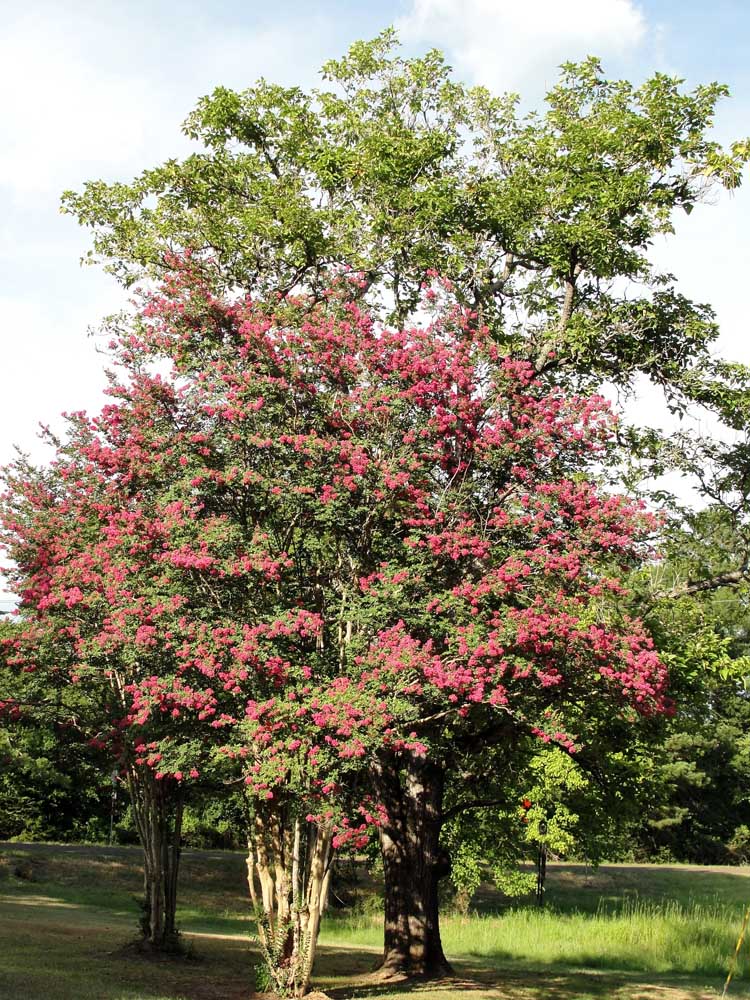Greg Grant: Crapemyrtles are a sign of the South
Published 7:51 pm Tuesday, August 9, 2022

- Crapemyrtles mark many old home sites in East Texas.
Deservedly one of the most popular shrubs in America. In the South, it takes the place of the lilac of the North but is far more beautiful …
Gilbert Onderdonk’s 1898–99
Trending
Mission Valley Nurseries catalogue, Nursery, Texas
Every self-respecting gardener knows that you grow lilacs in the North and crapemyrtles in the South. Even New York’s Liberty Hyde Bailey knew this. In his 1917 Standard Cyclopedia of Horticulture he stated that “The crapemyrtle, Lagerstroemia indica, is to the South what the lilac and the snowball are to the North — an inhabitant of nearly every home yard.”
The crapemyrtle received its common name for its superficial resemblance (although no relation) to the true myrtle (Myrtus) and for its crape-like flowers. The Latin name of the genus, Lagerstroemia, was given to the tree in 1759 by the Swedish botanist Linnaeus, in honor of his friend Magnus von Lagerstroem (1696–1759), Director of the Swedish East Indies Company and an avid naturalist.
There are about 55 species of Lagerstroemia, all native to Asia and the Pacific Islands. Of all of these, only three are cold-hardy through most of the South, L. indica, L. fauriei, and L. subcostata, withL. indica, from China the only one common in Southern gardens. It is likely the most popular small flowering tree in the entire South. It has been cultivated in its native Southeast Asia for thousands of years. Our crapemyrtle was supposedly introduced to the Royal Botanic Gardens at Kew, England in 1759.
Its exact date of introduction into the United States is unknown. Credit is often given to Andre Michaux, who established a nursery around Charleston, South Carolina, around 1786. Apparently George Washington was one of the first to attempt to grow crapemyrtles. Records at Mount Vernon show that a ship arrived in Philadelphia in April 1799 carrying two plants and seed of L. reginae, as well as seeds of L. indica. Bernard M’Mahon mentioned L. indica in The American Gardener’s Calendar in 1806. Crapemyrtle was listed among the plants cultivated in 1811 at the famous Elgin Botanic Garden in New York.
It wasn’t long before it began to spread across the South. Records at Prince Nursery in New York show that they were offering the crapemyrtle for sale in 1827. Thomas Affleck mentioned the crapemyrtle in a letter to the editor of the Natchez Daily Courier in 1854 but didn’t have it listed in his 1851–52 Southern Nurseries catalogue in Washington, Mississippi. Montgomery Nurseries of Montgomery, Alabama offered the crapemyrtle in its 1860 catalogue. Langdon’s Nurseries, near Mobile, offered four varieties (pink, purple, crimson, and white) in its 1881–82 catalog. In Texas, T. V. Munson’s Denison Nurseries listed pink, crimson, and purple crape myrtle in 1885, while in Frelsburg J. F. Leyendecker’s Pearfield Nursery catalog of 1888 said it was “too well known to require description.”
Trending
Almost every abandoned homesite in the South is marked by at least one surviving crapemyrtle showing off muscular trunks and exfoliating bark. This toughness and survivability lead to their use as a frequent cemetery ornamental and a common urban street tree.






